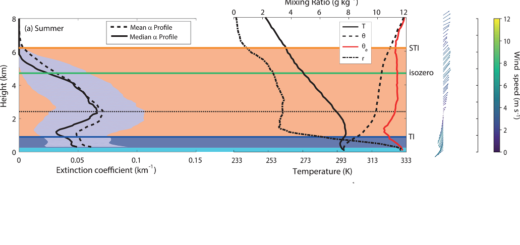Rainfall at Izaña was slightly above average during the hydrometeorological year 2013-2014
![]()
The last Hydrometeorological year (also known as “agricultural year” in Spain) began September 1, 2013 and ended on August 31, 2014. During this period a total rainfall of 425.2 liters per square meter was recorded at the Izaña Atmospheric Observatory, located in Tenerife 2371 meters above sea level. This value is slightly above the average of the reference period (1971-2000), which is 415 liters per square meter. The winter season was very wet, especially the first half of December when several storms from the southwest, some of them also accompanied by an extraordinary number of lightnings. This period offset the rainfall deficit from the rest of the seasons. Also noteworthy was the intense snowstorm and rime, which hit the Observatory in mid-February, causing major damage to the instruments. You can access news on the temporal clicking here.
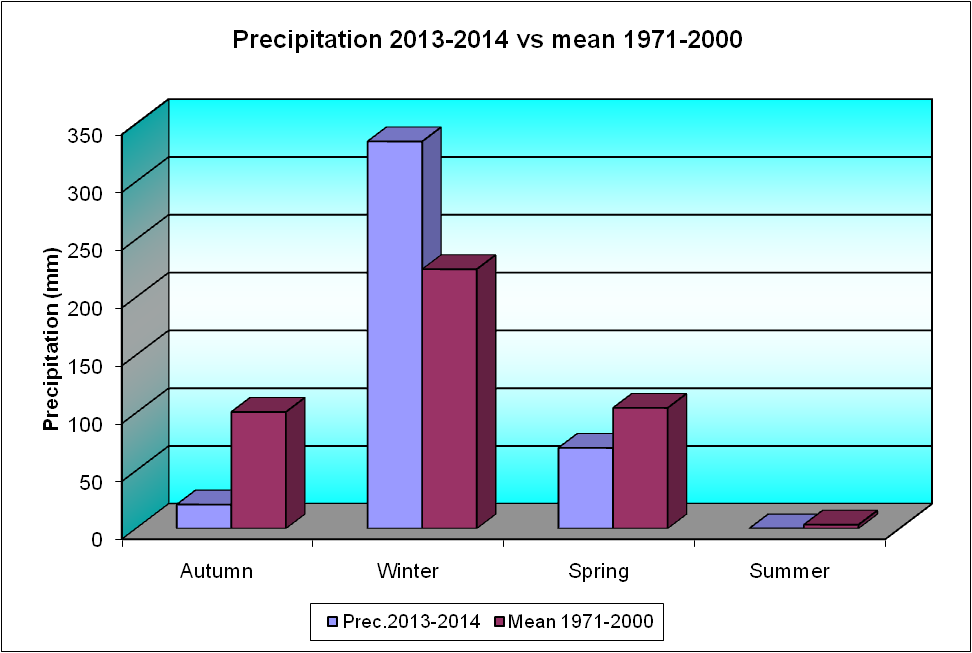
Precipitation collected in the four seasons of the hydrometeorological year 2013-2014 , in blue. Average rainfall for the reference period 1971-2000, in red.
On the other hand, precipitation due to fog, also known as “horizontal precipitation” or “hidden precipitation” (for more information read the news in 2010, click here) is far Izaña experimentally since 2009. This precipitation is measured with a modified Hellmann rain gauge, to which has been added a mesh that attempts to mimic the uptake of fog droplets by vegetation. In the hydrometeorological year 2013-2014 a total of 2,064 liters per square meter were collected in the fog-rain gauge, representing an amount of water about five times higher than that recorded in the conventional gauge. Furthermore, the storm was held in mid-February 2014 produce such intense rime that caused the breakage of the mast that holds the gauge, and the total accumulated water was lost during that time. Total precipitation amount would have been much larger if we would have been able to measure that sample.
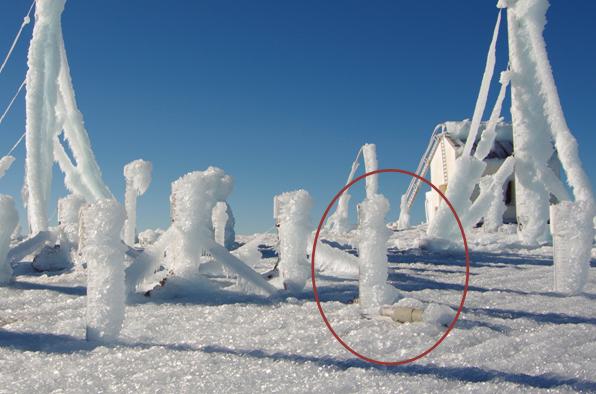
Fog-rain gauge broken by the weight of ice during the storm of February 2014 marked by a red circle. The top part, containing the mesh for capturing fog water and the tank, is on the ground.
Quantifying the amount of water produced only by fog is not trivial because it depends on factors such as exposure to wind. Furthermore, it tends to overestimate precipitation, because the mesh designed to catch the mist droplets also retains raindrops or snow. In any case, it seems clear that the contribution of water from fog is significant. This is of great importance, since water from fog represents an extra water intake that allows the vegetation of the summits of Tenerife overcome periods of extreme drought as the hydrometeorological 2011-2012 year, when we collected only 60 l / m2 with the standard gauge and 861 l / m2 with the fog-rain gauge.
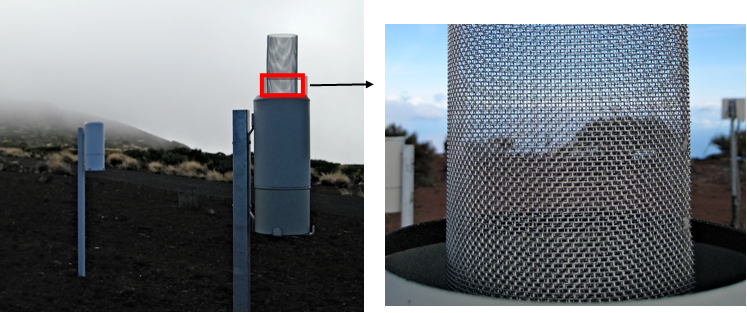
Left image: in the foreground, Hellmann rain gauge with the cylindrical mesh ready to capture water from fog. In the background, conventional Hellmann rain gauge used to compare the precipitation collected on both gauges. Right image: detail of the mesh, whose pattern consists of 2 mm side steel squares. This mesh mimics uptake of fog droplets in the way that makes the vegetation.
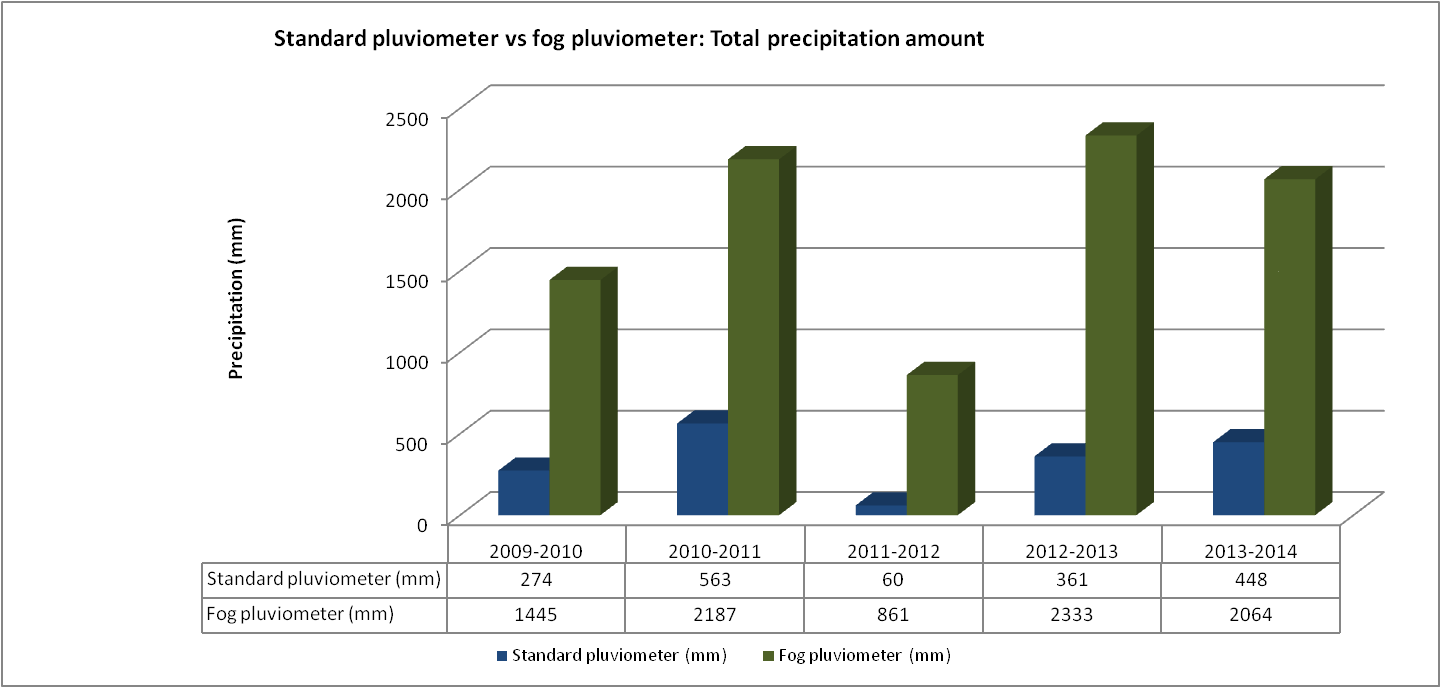
Comparison of the precipitation collected with standard rain gauge and the modified fog-rain gauge. Note that the precipitation collected by the standard gauge is not exactly the same as the aforementioned precipitation at the beginning of this article, for the hydrometeorological 2013-2014 year. This is because the measurements were made with two different gauges. In the last reporting period, the precipitation amount measured with the fog-rain gauge exceeded by almost five times the water collected with the conventional rain gauge.
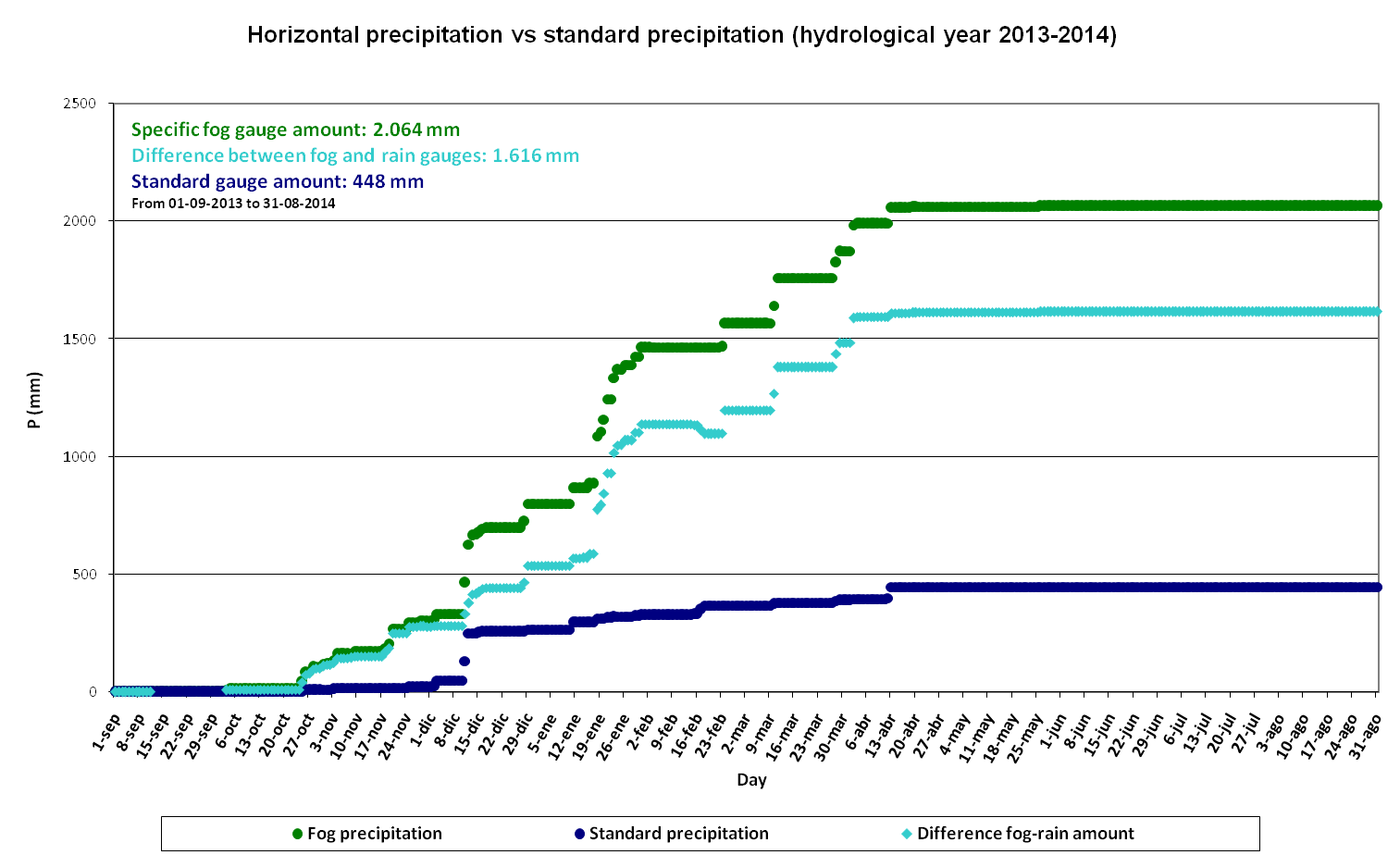
Horizontal precipitation and rainfall accumulated since September 1, 2013 until August 31, 2014, with the cumulative difference between the two types of precipitation.



